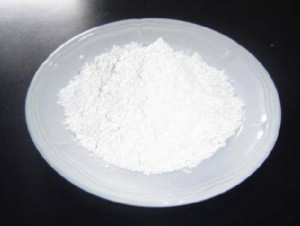Methylsynephrine
You may have heard of Synephrine found in Citrus aurantium. Then there’s Methylsynephrine. It’s also found in iForce Dexaprine and extracted from the bitter orange fruit or Citrus aurantium.
Synephrine and Methylsynephrine as Weight Loss Supplements
Since they contain the root word “synephrine” or suffix “-phrine”, they must be the same, right? Well it’s a yes and it’s a no. Chemically speaking, the two of them have similar chemical structures.
Synephrine
Synephrine can come from the plant Acacia rigidula. In a nutshell, it’s an adrenergic agonist that has a stronger effect for alpha-receptors compared to norepinephrine. It is also related to phenylephrine. Synephrine is also found in Citrus aurantium. When ephedrine or ephedra was banned, synephrine became popular as a safer choice as a weight loss ingredient.
There are several studies that have assessed the efficacy of Synephrine as a weight loss product. They’ve come up with a list of medical benefits counting thermogenesis and lipolysis otherwise known as burning of fats. Some studies found that at 30 milligram doses, it produced an increase in metabolic rate. However, one must not exceed 60 milligrams for safety reasons.
Methylsynephrine

Immature fruits of Citrus Aurantium – Extracts iForce Dexaprine
Methylsynephrine differs from Synephrine due to its unique chemical structure even though both can be found in Citrus aurantium. The difference is the addition of a methyl group. This increases the compounds affinity to beta-receptors most especially the Beta-3 receptors.
Synephrine, Methylsynephrine, Beta-Receptors and Fat Loss
Why is it important to stimulate the beta-receptors? It has been proven many decades ago that beta-receptors in the body can have a lot of effects to your metabolism. There are three types of Beta-Receptors named as Beta-1, Beta-2, and Beta-3. Synephrine and Methylsynephrine in iForce Dexaprine can stimulate all three in varying degrees and can illicit the following weight loss mechanisms:
Beta-1 Adrenergic Receptor stimulation by Methylsynephrine and Synephrine
- Increased cardiac output – Achieved by increasing heart rate thus pumping blood throughout the body. It’s important to note that the body relies on the heart to circulate oxygen (via red blood cells), water and various nutrients such as proteins, glucose and more. Without oxygen, water and some glucose, fats won’t be metabolized and used by the body as energy.
Beta-2 Adrenergic Receptor stimulation by Methylsynephrine and Synephrine
- Lipolysis in adipose tissue – Adipose tissue is what bodybuilders call the “fat layer”. Usually adipose tissue is located in the subcutaneous area just under the skin. This is typically known as “white” adipose tissue and frequently contains lipids or fat. The “brown” adipose tissue on the other hand wraps around organs. They contain glycogen or a combination of protein, fat and glucose. Fats give a higher energy per gram compared to protein and carbohydrates. Unfortunately, adipose formation can be considered as an indicator of poor health and increase risk of heart problems. Dissolving fat can be done through proper diet and exercise, and sped up with the help of supplements such as Dexaprine, which contains Methylsynephrine.
- Anabolism in Skeletal Muscles – Increases muscular mass that is very beneficial to body builders. The presence of more muscles mean that the body can burn more energy.
- Gluconeogenesis – Increases glucose in the blood which makes Methylsynephrine a great energy booster.
- Histamine inhibition – Reduces inflammation of the body therefore keeping muscle damage at minimum.

Natural Dexaprine Ingredient Acacia Rigidula
Beta-3 Adrenergic Receptor Stimulation by Methylsynephrine and Synephrine
- The last Beta receptor plays an important role in fat loss and thermogenesis. Various studies have found that Methylsynephrine has a great affinity to beta-3 receptors compared to Synephrine. Most weight loss drugs out there try to focus more on the Beta-3 receptors as it does not cause cardiac complications. Enhanced lipolysis of adipose tissue is triggered by the Beta-3 receptor. The only known side effect to stimulating the Beta-3 receptor with the use of Methylsynephrine is tremor.
Side Effects of Methylsynephrine

Extracted Methylsynephrine from Citrus Aurantium
iForce Dexaprine only contains natural occurring Methylsynephrine found in Citrus aurantium. In fact, the dosage is enough for an incredible 9 hour half-life, which is well within the 60 milligram limit. Still, one must not take any other type of stimulant while taking Dexaprine. As with most supplements, overdose of Methylsynephrine along with other commercial stimulants could mean overstimulation of the Beta Adrenergic receptors.
Try iForce Dexaprine alone to feel the powerful effects of Methylsynephrine and you’ll never need any other fat-loss and stimulant supplement ever again.
As always, speak to your doctor before beginning a new diet or supplementation program. Don’t mix with other stimulants or prescription drugs unless under the direct supervision of a doctor, and follow the label’s recommendations by starting with a SMALL dosage!
SOURCES CITED:
- Fourcroy, Jean L. (2008). Pharmacology, doping and sports: a scientific guide for athletes, coaches, physicians, scientists and administrators. Taylor & Francis.
- Stohs SJ, Preuss HG, Keith SC, Keith PL, Miller H, Kaats GR. Effects of p-Synephrine alone and in Combination with Selected Bioflavonoids on Resting Metabolism, Blood Pressure, Heart Rate and Self-Reported Mood Changes. Int J Med Sci 2011; 8(4):295-301. Available from http://www.medsci.org/v08p0295.htm
- “Citrus × aurantium L.”. Germplasm Resources Information Network. United States Department of Agriculture. 1999-12-17.
- Duenwald, Mary (2005-10-11). “Bitter Orange Under Scrutiny as New Ephedra”. New York Times
- He, Xian-guo; Lian, Li-zhi; Lin, Long-ze; Bernart, Matthew W (1997). “High-performance liquid chromatography–electrospray mass spectrometry in phytochemical analysis of sour orange (Citrus aurantium L.)”. Journal of Chromatography A 791: 127–134
Leave a comment
Your email address will not be shared or published. Required fields are marked *
